
| Evening Brown (erroneously: Hipio banksia) SATYRINAE, NYMPHALIDAE, PAPILIONOIDEA | (donherbisonevans@yahoo.com) and Stella Crossley |
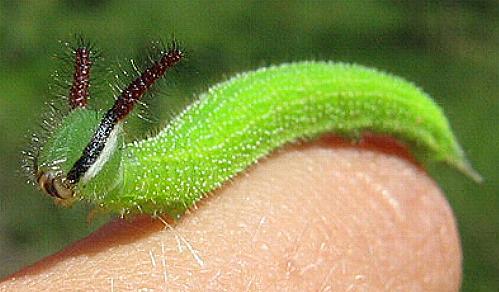
(Photo: courtesy of
Stephanie Noverraz, taken at
Nimbin, New South Wales)

| Evening Brown (erroneously: Hipio banksia) SATYRINAE, NYMPHALIDAE, PAPILIONOIDEA | (donherbisonevans@yahoo.com) and Stella Crossley |

(Photo: courtesy of
Stephanie Noverraz, taken at
Nimbin, New South Wales)
The Caterpillar of this species feeds on various members of the Grass family (POACEAE), including :
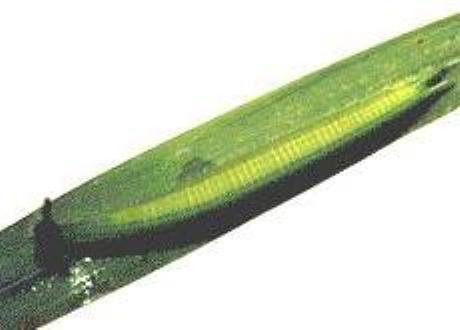
Caterpillars have also been found on members of the Sedge family ( CYPERACEAE ), including :

The Caterpillae is cylindrical, and green with white spots. It has two dark reddish hairy horns on its head, and a pair of horns on its tail. The Caterpillars feed in daylight near a leaf tip, often in a small group. They rest on the underside of a leaf along a vein.

The pupa is smooth and green. It hangs by a silk cremaster from the foodplant. Its length is about 2 cms.
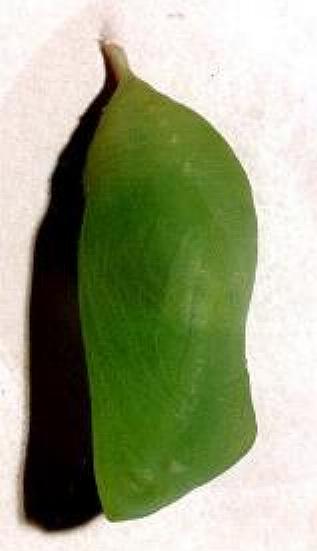
The adult has two forms: the winter (dry) season form is dark brown with an orange patch containing double eyespot near the tip of each forewing. These is usually a single eyespot on the top of each hindwing. Each wing has a recurved margin. The wingspan is about 7 cms.
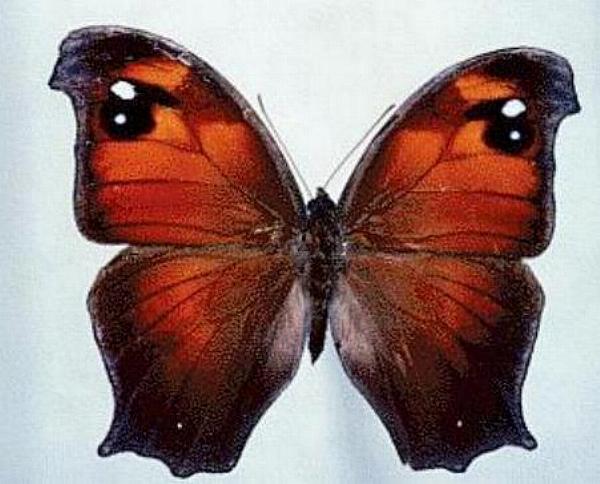
The summer (wet) season form is paler.
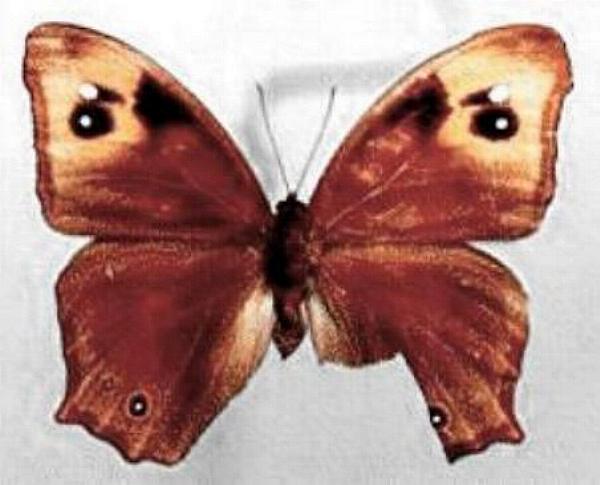
The underside (of both forms) is variable: generally a cryptic brown with a number of small eyespots.

The eggs are spherical and pale yellow, and have a diameter of about 1 mm. They are laid at dusk in groups of one to five on the underside of young foodplant leaves.
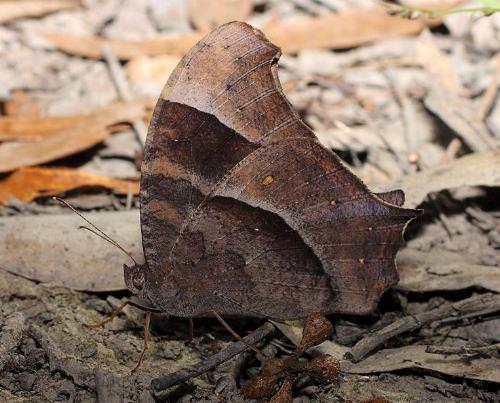
Like many adult insects, they like to drink sap exudung from damaged trees
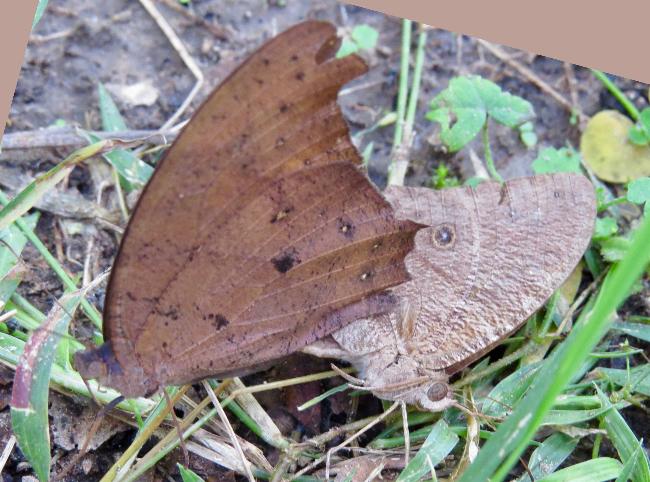
Races of this species have been found over much of the world, for example :
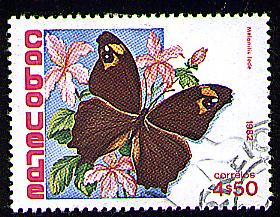
The race found in Australia is bankia (Fabricius, 1775) which occurs in:

Further reading :
Michael F. Braby,
Butterflies of Australia,
CSIRO Publishing, Melbourne 2000, vol. 2, pp. 468-469.
Frank Jordan & Helen Schwencke,
Create More Butterflies : a guide to 48 butterflies and their host-plants
Earthling Enterprises, Brisbane, 2005, pp. 18, 61.
Carl Linnaeus,
Insecta Lepidoptera,
Systema Naturae,
Volume 1, Edition 10 (1760), Class 5, Part 3, p. 474, No. 102.
John Moss,
Note on the Evening Brown butterfly (Melanitis leda) hostplants and
clarification of the correct name for the Carex hostplant
of the skipper butterfly the Southern Sedge-darter (Telicota eurychlora),
Butterflies and Other Invertebrates Club,
Newsletter,
Issue 45 (June 2007), pp. 7-8.
Buck Richardson,
Tropical Queensland Wildlife from Dusk to Dawn Science and Art,
LeapFrogOz, Kuranda, 2015, p. 228.
 caterpillar |  butterflies |  Lepidoptera |  moths |  caterpillar |
(updated 29 April 2010, 10 December 2013, 11 April 2018, 24 June 2020, 12 April 2021)